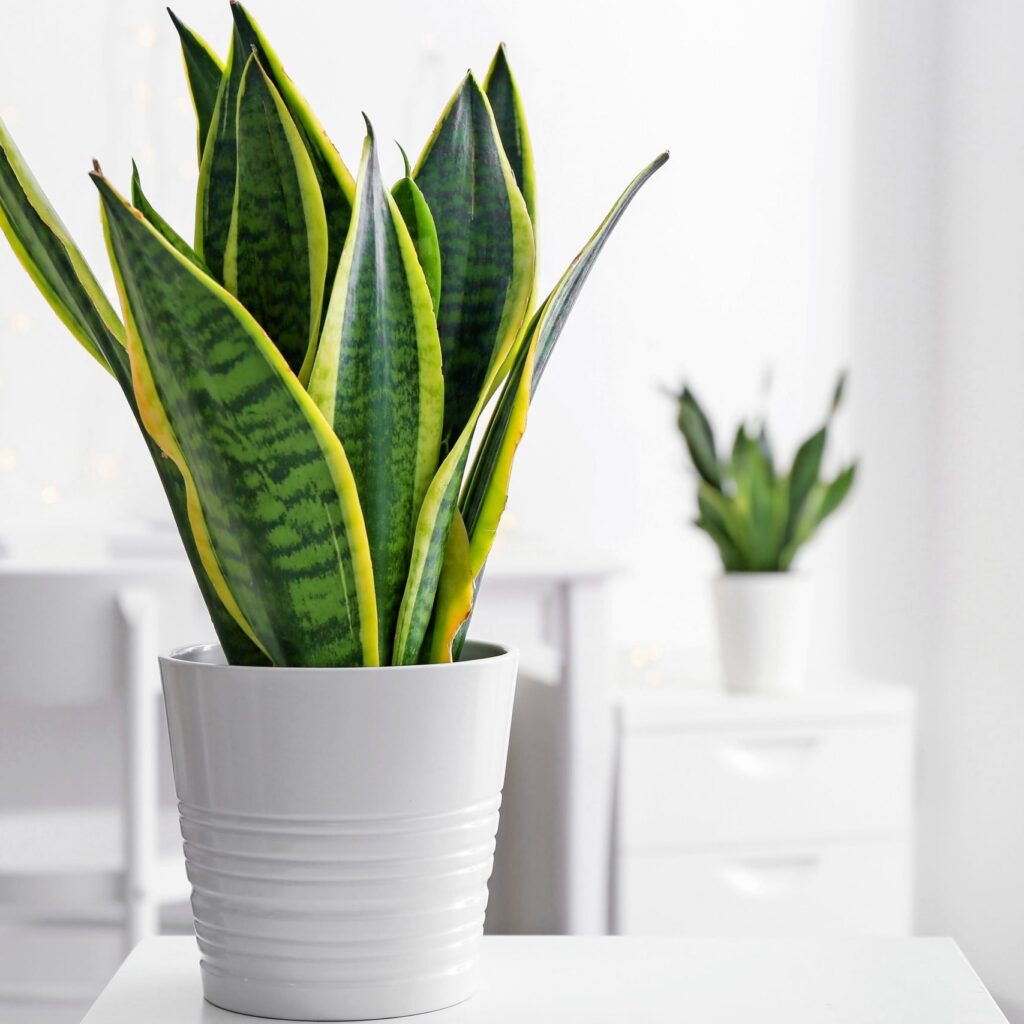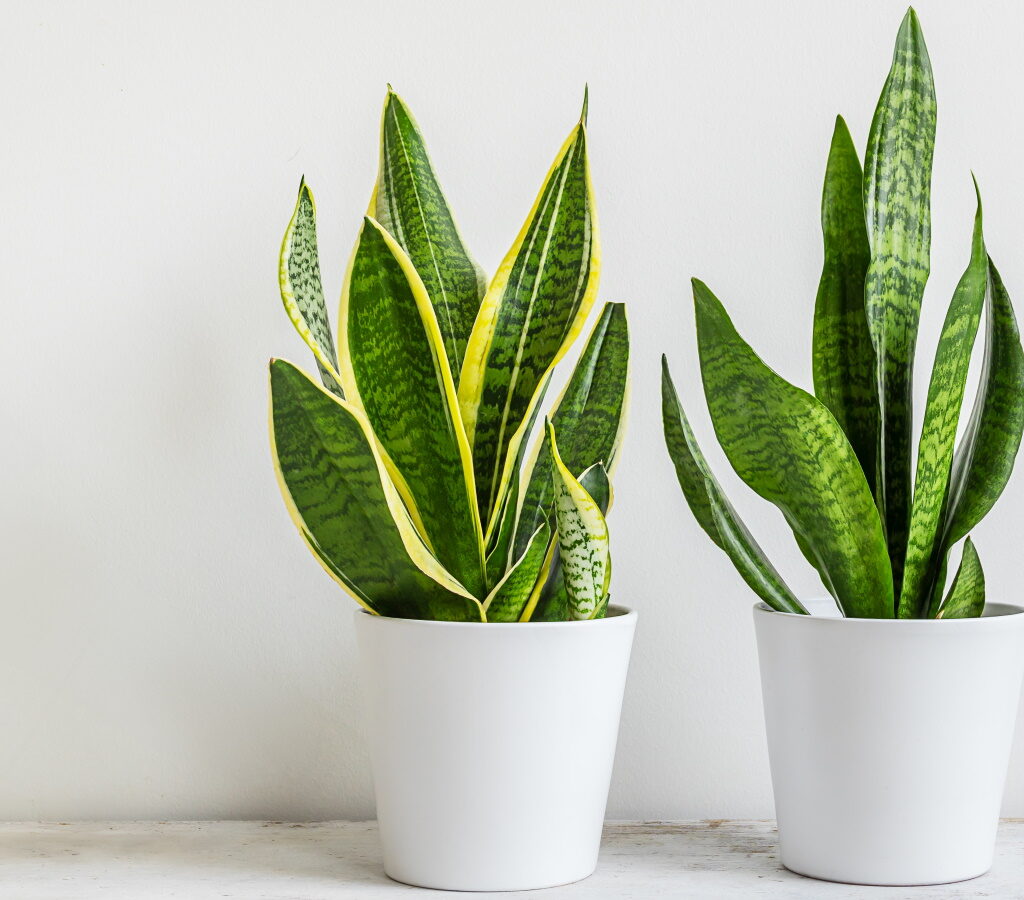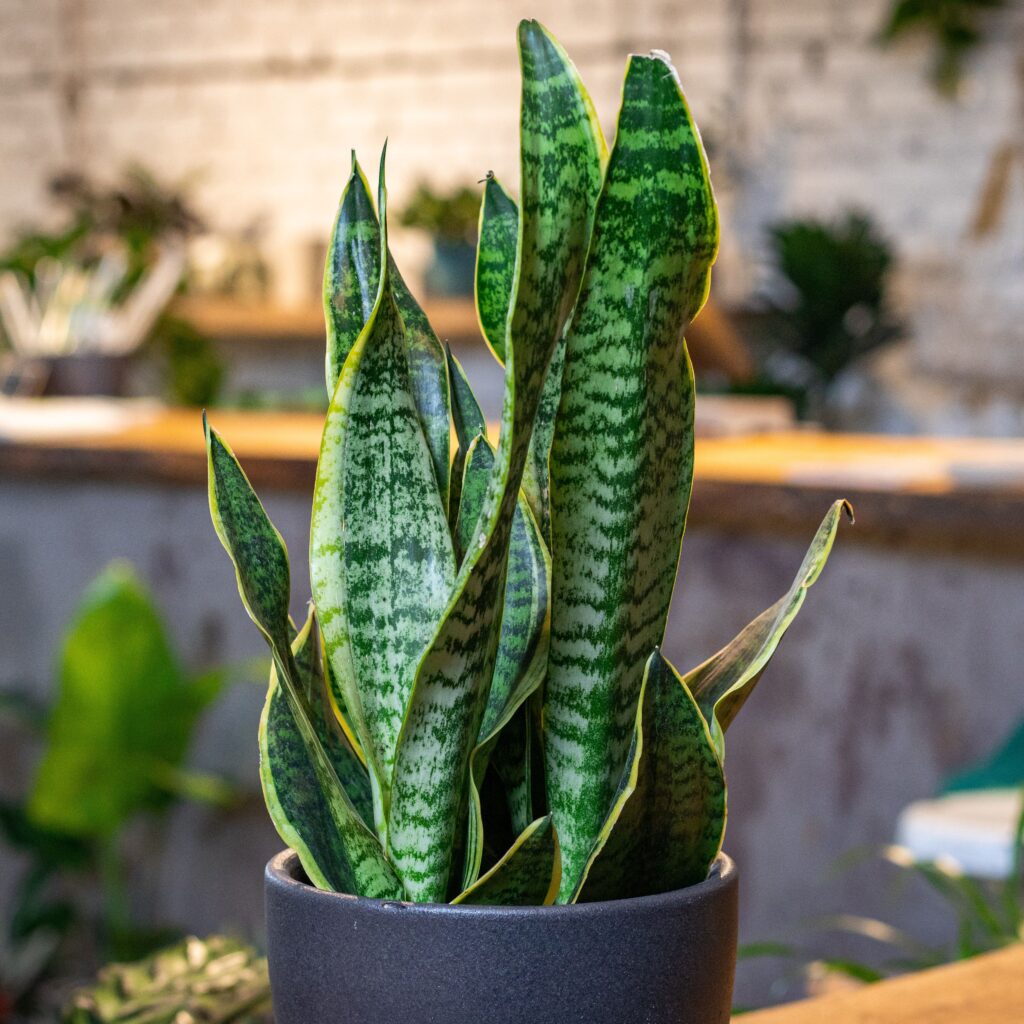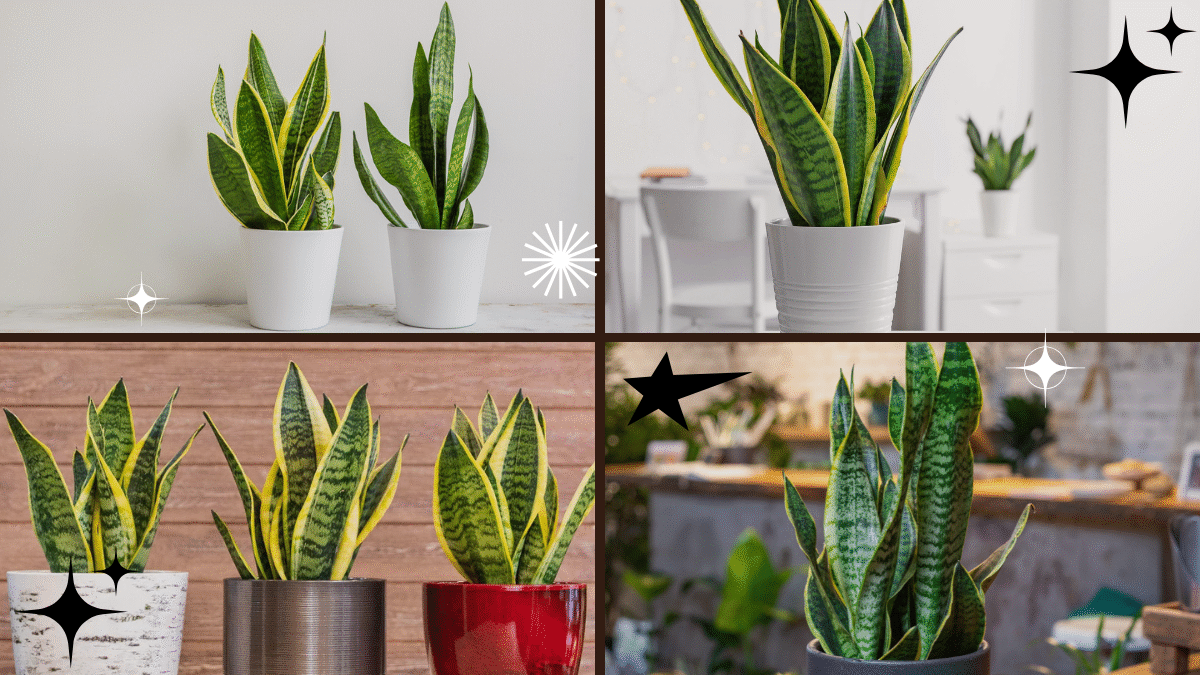If you’re new to houseplants and want to start with something low-maintenance yet striking, the Snake Plant (also known as Sansevieria or Dracaena trifasciata) is the perfect choice. Often called Mother-in-Law’s Tongue, this hardy, resilient plant is almost impossible to kill and adds a modern, sculptural look to any room.
In this complete beginner’s guide, we’ll cover everything you need to know about how to take care of a Snake Plant, from lighting and watering to propagation and common problems — so your new leafy friend stays healthy and thriving.

What is a Snake Plant?
The Snake Plant is an evergreen perennial native to tropical West Africa. It’s famous for its long, upright leaves that feature variegated green patterns and sharp, pointed tips — resembling the shape of a snake, hence the name.
Popular Snake Plant varieties:
- Sansevieria trifasciata ‘Laurentii’ – recognizable by its green center with yellow edges.
- Sansevieria cylindrica – has round, stiff leaves shaped like spears.
- Sansevieria moonshine – features silvery-green leaves with a ghostly hue.
Not only are they beautiful, but Snake Plants are also excellent air purifiers, removing toxins like formaldehyde and benzene from your indoor environment.

Why Snake Plants Are Perfect for Beginners
- Extremely low maintenance
- Thrive on neglect
- Tolerant of low light
- Require minimal watering
- Pest-resistant
- Adaptable to different environments
If you often forget to water your plants or have struggled to keep houseplants alive, a Snake Plant is a forgiving, beginner-friendly option.

How to Care for a Snake Plant: Step-by-Step
1. Choose the Right Location
Snake Plants are incredibly adaptable but perform best in bright, indirect light. They can also tolerate low-light areas, making them perfect for bedrooms, offices, or bathrooms.
Ideal placement:
- Near an east- or north-facing window
- On a well-lit shelf or table
- Away from intense direct sunlight (which can scorch leaves)
Note: While they can survive in low light, their growth might slow down.
2. Select the Right Pot and Soil
Snake Plants don’t like soggy roots, so it’s important to plant them in a container with good drainage.
Pot:
- Use a terracotta or ceramic pot with drainage holes.
Soil:
- Opt for a well-draining potting mix, like a cactus or succulent blend.
- You can mix regular potting soil with sand or perlite for extra drainage.
3. Watering Your Snake Plant
This is where most new plant parents go wrong. Snake Plants are drought-tolerant and prefer to dry out completely between waterings.
Watering tips:
- Water thoroughly, but only when the top 1–2 inches of soil feels dry.
- During the growing season (spring and summer), water every 2–4 weeks.
- In fall and winter, reduce watering to once a month or less.
- Always empty excess water from saucers to avoid root rot.
Pro Tip: It’s better to under-water a Snake Plant than over-water it.
4. Temperature and Humidity
Snake Plants prefer warm, dry conditions similar to their native tropical habitat.
Ideal conditions:
- Temperature: 65°F to 85°F (18°C to 29°C)
- Avoid cold drafts and temperatures below 50°F (10°C)
- Tolerates average indoor humidity; no need for extra misting
5. Fertilizing Your Snake Plant
While not heavy feeders, Snake Plants appreciate occasional fertilizing during their active growing months.
Fertilizing tips:
- Use a balanced, all-purpose houseplant fertilizer diluted to half strength.
- Feed once a month in spring and summer.
- No need to fertilize in fall and winter.
6. Pruning and Cleaning
Snake Plants are naturally tidy, but occasional pruning helps keep them looking their best.
How to prune:
- Remove yellow, brown, or damaged leaves at the base with clean scissors.
- Wipe leaves with a damp cloth to remove dust, which helps with photosynthesis.
7. Repotting Your Snake Plant
Snake Plants have shallow roots and like being slightly root-bound, so frequent repotting isn’t necessary.
When to repot:
- Every 2–3 years, or when roots start to bulge out of the pot.
How to repot:
- Choose a pot 1–2 inches wider than the current one.
- Gently loosen the plant from the old pot.
- Shake off old soil, trim dead roots, and replant in fresh, well-draining soil.
8. Propagating Snake Plants
One of the fun parts of Snake Plant care is how easy they are to propagate.
Methods:
a) Leaf Cuttings in Water:
- Cut a healthy leaf near the base.
- Let it callous over for 1–2 days.
- Place in a jar with water, ensuring only the bottom part is submerged.
- Wait for roots to grow, then transplant into soil.
b) Leaf Cuttings in Soil:
- Cut a leaf into 3–4 inch sections.
- Allow cut ends to dry for a day.
- Plant upright in moist, well-draining soil.
c) Division:
- Remove the plant from its pot.
- Separate clumps or rhizomes.
- Replant sections into new pots.

Common Snake Plant Problems and Solutions
Even though Snake Plants are tough, they can still encounter issues. Here’s how to identify and fix them:
| Problem | Cause | Solution |
|---|---|---|
| Yellowing Leaves | Overwatering, poor drainage | Allow soil to dry completely before watering again |
| Brown Leaf Tips | Low humidity, underwatering | Trim tips, maintain consistent watering schedule |
| Soft, Mushy Leaves | Root rot from overwatering | Remove affected leaves, repot in fresh soil |
| Stunted Growth | Insufficient light, lack of nutrients | Move to brighter spot, fertilize in spring |
Are Snake Plants Toxic?
Yes, mildly.
Snake Plants contain saponins, which can cause nausea, vomiting, or mouth irritation if ingested by pets or children. Keep the plant out of reach to stay safe.
Benefits of Having a Snake Plant Indoors
- Air purification: Removes toxins like formaldehyde and benzene.
- Oxygen production: Releases oxygen at night, improving indoor air quality.
- Low maintenance: Ideal for beginners and busy people.
- Versatile: Works in homes, offices, bedrooms, and bathrooms.
- Stylish décor: Adds a sleek, modern vibe to any room.
Final Thoughts
The Snake Plant is the ultimate beginner houseplant — hardy, elegant, and adaptable. With minimal effort, you can enjoy its bold, architectural leaves and air-purifying benefits. By following this simple care guide, your Snake Plant will thrive, making you feel like a confident plant parent in no time.
Whether you want a desk companion, a bedroom air purifier, or a bold corner plant, the Snake Plant is an affordable and fuss-free choice for any home.





Leave A Comment